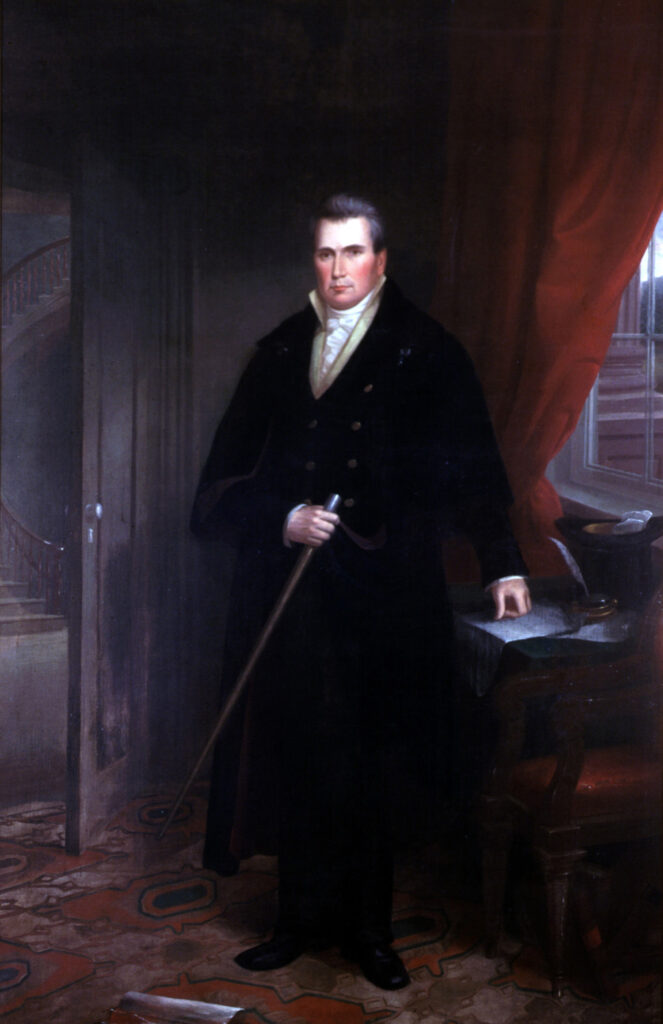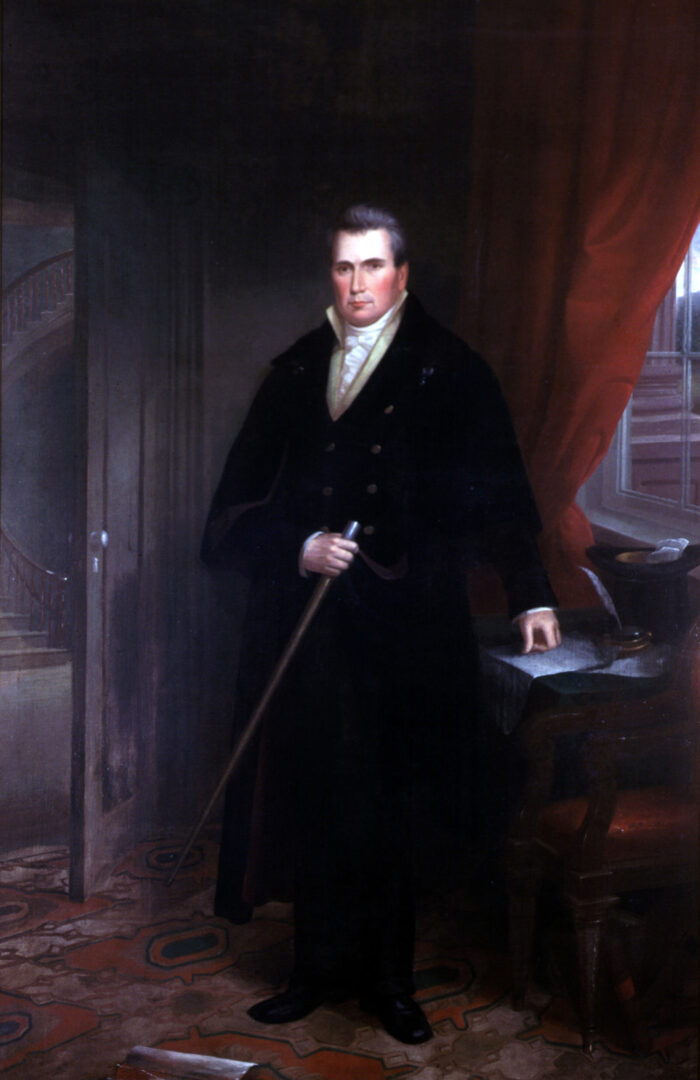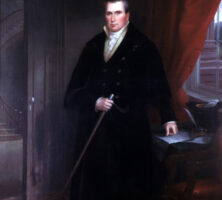John Clark, a major general in the Georgia militia, state representative, and U.S. Indian agent, was governor of Georgia from 1819 to 1823.

Courtesy of Georgia Capitol Museum, University of Georgia Libraries
The eldest son of Hannah Arrington (sometimes seen as Harrington) and Elijah Clarke (sometimes spelled “Clark”), John Clark was born on February 28, 1766, in Edgecombe County, North Carolina. In the early 1770s his family moved to “the Ceded Lands” of northeastern Georgia, later Wilkes County. After the start of the Revolutionary War (1775-83) he spent a short time in school in North Carolina but soon returned to Georgia and joined his father’s patriot militia unit. He fought at several engagements, including Kettle Creek and Augusta in Georgia and Musgrove Mill in South Carolina. At age sixteen he achieved the rank of captain in the Georgia militia.
After the war the state legislature granted him 800 acres of land as a reward for his effort. Clark continued to serve in the militia and achieved the rank of major general by 1796. During his service the Georgia frontier was still very dangerous, and he spent much of his time protecting frontier settlements. His most distinguished action was under the command of his father in a 1787 militia victory over the Creek Indians at Jack’s Creek in present-day Walton County.
Clark was not directly involved in his father’s attempt to establish the so-called Trans-Oconee Republic in 1794, but he was implicated in the subsequent Yazoo Land Fraud. He survived the scandal and was elected to the General Assembly in 1801. By that time two major political factions had begun to take hold in Georgia politics, just as they had on the national level. Clark was the leader of the faction that generally included North Carolina immigrants and those who lived in the newly settled areas of Georgia. His main opponents, William Harris Crawford and George Troup, led the other faction, which mainly included Virginia immigrants and the residents of the more affluent, established areas of Georgia.
The factional rivalry descended into a violent feud when Crawford killed Peter Van Allen, one of Clark’s allies, in a duel in 1802. Four years later Clark wounded Crawford in a duel. Unsatisfied with the result, Clark challenged him again, but Crawford refused. In a fit of anger over Crawford’s unwillingness to meet, Clark cornered a Crawford ally, Judge Charles Tait, in the streets of Milledgeville and severely whipped him with a riding crop. Clark was fined $2,000 for the incident, a reflection of the deep-seated division between the two political factions.
Clark ran for governor unsuccessfully in 1813 and 1817; he finally won the office in 1819, defeating his longtime rival Troup. He defeated Troup again two years later by a mere two votes in the legislature. During his tenure as governor Clark oversaw the Treaty of 1821, which opened the Creek lands between the Flint and Ocmulgee rivers for settlement. His repeated attempts to gain more land from the Creeks earned him the name “E-cun-naw-au-po-po-hau,” which translates as “always asking for land.” To offset the effects of a devastating fire in 1820, Clark provided Savannah with $10,000 from the state treasury. He also set aside half a million dollars for internal improvements and the establishment of public schools.
In 1825 more than 40,000 votes were cast in the state’s first popular election for governor, and Clark, who supposedly represented the common man, lost to his aristocratic rival by a mere 683 votes. Clark retired from politics thereafter and accepted U.S. president Andrew Jackson’s offer to be a federal Indian agent and “Keeper of the Public Forests” in Florida. He also forgave all of his old enemies, with the exception of Crawford.
Clark died of yellow fever in St. Andrews Bay, Florida, on October 12, 1832; his wife, Nancy Williamson Clark, died two weeks later. Their remains were relocated to the National Cemetery in Marietta by the Daughters of the American Revolution in 1923.






